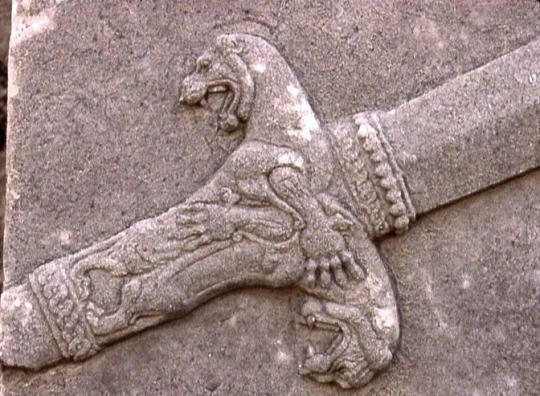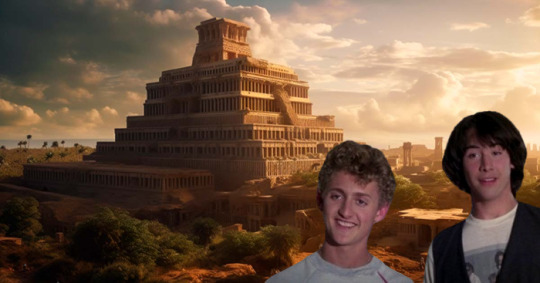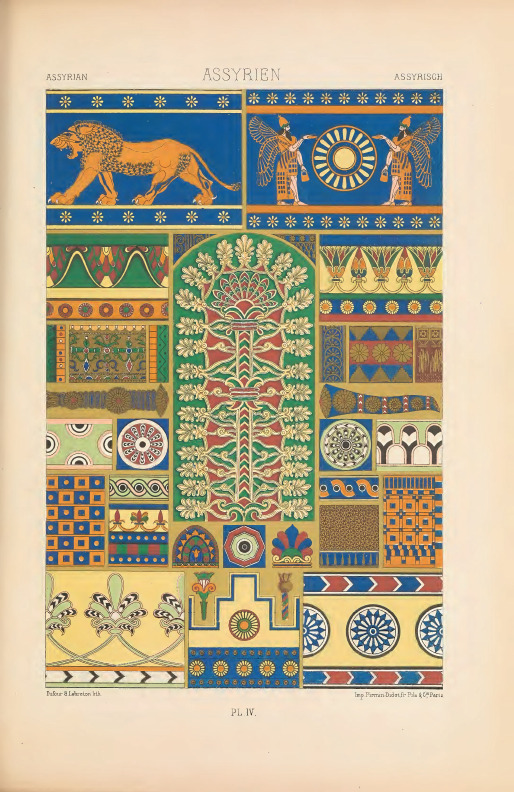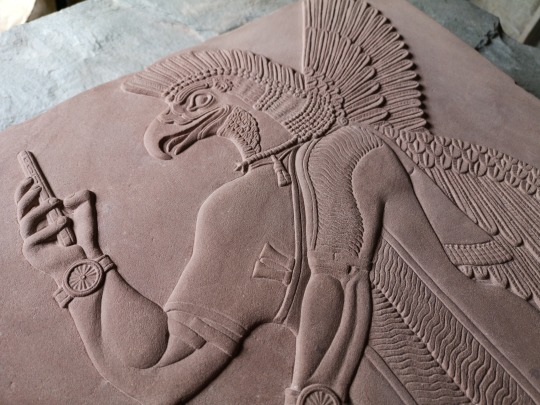#assyrian
Text

Assyrian alabaster relief of an Eagle-Headed Winged Figure from the ancient city of Nimrud, dating back to the 9th century BCE. The Pergamon Museum, Berlin, GERMANY.
Photo by Babylon Chronicle
2K notes
·
View notes
Text


~ Plaque of conjuration against the Lamashtu, called "plaque of the underworld" or Hell Plate.
Period: Neo-Assyrian (1st half of the millennium)
Place of origin: Assyria
Medium: Bronze
#ancient#ancient art#history#museum#archeology#ancient sculpture#ancient history#archaeology#assyria#assyrian#plaque#Lamashtu#conjuring#underworld#hell plate#Neo-Assyrian#bronze
2K notes
·
View notes
Text
To anyone interested in learning about Artsakh, its history and the struggle of Artsakhi Armenians for freedom and self determination, I suggest checking out Learn For Artsakh initiative (@/learn4artsakh on Instagram).They share a lot of information on these topics and spotlight the interconnection of violence inflicted on the indigenous groups in the region by the colonizing powers.
They also have an e-library with free pdfs of many books written by Armenians about Artsakh as well as literature about DR Congo, Sudan, Palestine and other nations experiencing genocide (scroll down to the "Libraries Against Genocide" section).
#armenia#artsakh#gonna tag other countries/nations that have books and articles about them in the library too#palestine#sudan#dr congo#kashmir#tigray#circassian#assyrian#ezidi#yezidi#native american#first nations#they also add books to it so i suggest checking it from time to time to see if anything's new there#hopefully someone will find this useful
419 notes
·
View notes
Text

Flood tablet/Epic of Gilgamesh, from the Library of Ashurbanipal, Assyrian, 7th century BC
from The British Museum
#history#antiquities#art#ancient history#ancient art#cuineiform#epic of gilgamesh#ancient mesopotamia#assyrian
986 notes
·
View notes
Text

Cesare Saccaggi (1868-1934)
"Great Semiramis, Queen of Assyria" (c. 1905)
Oil on canvas, gold and precious stones
The myth of Semiramis has its roots in late antiquity. Historiography, religion, art and literature have contributed to passing on different and contradictory legends linked to her figure over the centuries: some recognize her as the enlightened Assyrian ruler Shammuramat, wife of King Shamshi-Adad V and regent of his son Addu-Nirari III--to whom we owe the realization of the hanging gardens of Babylon.For others, Semiramis is the daughter of a nymph, abandoned in the desert and then fed by doves - the 'daughter of the air', according to Calderón de la Barca and Carlo Gozzi. Or she is the daughter of the goddess Derceto and the Syrian Caistro, married first to Onne, then to King Nino, with whom she had a son who, according to tradition, when he became an adult, chased her from the throne and killed her. During her reign, Semiramis conquered Mesopotamia, Egypt and Ethiopia. Herodotus and Diodorus Siculus speak of her as a great and good sovereign.
#paintings#art#artwork#painting#female portrait#cesare saccaggi#oil on canvas#fine art#italian artist#gold#precious stones#portrait of a woman#big cat#animals#costume#costumes#history#mythology#assyrian#ancient assyria#aesthetic#aesthetics#white dress#dressess#early 1900s#early 20th century
408 notes
·
View notes
Text

Judith holding the Head of Holofernes by Jean-François Godefroy
#judith#holofernes#art#jean françois godefroy#judith and holofernes#biblical#bible#assyrian#assyria#general#book of judith#bethulia#siege#war#camp#tent#city#religion#religious art#christianity#christian#jewish#nineveh#nebuchadnezzar#mesopotamia#mesopotamian#sword#helmet#shield#heroine
86 notes
·
View notes
Text

Assyrian relief sculpture of a decorated scabbard with lions.
233 notes
·
View notes
Note
Bill and Ted in ancient Mesopotamia

bill and ted are in ancient mesopotamia! hey ted, did you know that the assyrians lived here?
84 notes
·
View notes
Text

Tinkering around in blender and gimp rn
#my wips#sims 4#s4mm#sims 4 history#mesopotamia#mesopotamian#assyrian#assyria#sumer#sumerian#queen puabi#bablyonian#bablyon#wip hair#wip outfits
160 notes
·
View notes
Photo

The human-headed Lamassu from the city of Nimrud, dating back to 883-859 BCE. The Pergamon Museum, Berlin, GERMANY.
Photo by Babylon Chronicle
1K notes
·
View notes
Text

~ Furniture plaque carved in relief with lion-headed figure.
Period: Neo-Assyrian
Date: ca. 8th–7th century BC.
Place of origin: Mesopotamia, Nimrud (ancient Kalhu)
Culture: Assyrian
Medium: Ivory
#ancient#ancient art#history#museum#archeology#ancient sculpture#ancient history#archaeology#mesopotamia#Assyria#neo Assyria#assyrian#nimrud#kalhu#lion#plaque#furniture plaque#ca. 8th century B.C.#ca. 7th century B.C.
919 notes
·
View notes
Text

111 notes
·
View notes
Text


Albert Racinet's "Polychrome Ornament," 1869
PLATE IV
ASSYRIAN ART
EXAMPLES OF POLYCHROMATIC DECORATION
TWO distinct periods may be noted in Assyrian art: the first, that of the foundation of Babylon by the Nabateans, on an alluvial soil destitute of stone quarries-a period characterized by the exclusive use of brick, an.cl in which architecture was confined within very narrow limits; and a second period, that of the foundation of Nineveh by the Scythians, the conquerors of primitj.ve Babylon, in a region where basalt ancl numerous stone quarries rendered possible a monumental architecture quite unknown to the Babylonians.
It is to this Ninevite period, which might also be called the Scytho-Assyrian, that the majority of the remains collected in the museums of London and Paris belong; as also do the various specimens given in our plate.
NINEVEH - PALACE OF KHORSABAD.
No. 1.-Painted sculptures, after Layard.
Nos. 2, 3, 4.-Painted sculptures, after Victor Place. No. 5.-Bricks inlaid in colours, after Layard.
Nos. 6 to 10.-Enamelled bricks, after Victor Place. Nos. 11 to 18.-Various specimens, after La yard. Nos. 19, 20.-Paintings, after Victor Place.
Nos. 21 to 23.-Restorations, after Botta
#Albert Racinet#art#ancient history#ancient art#1800s art#1800s#19th century#ancient assyria#assyrian#antiquity#illustration#design#aesthetic#cultural art
54 notes
·
View notes
Text

Fragment of an alabaster relief depicting a cavalryman leading his horse to a river, Assyrian, 7th century BC
from The Metropolitan Museum of Art
439 notes
·
View notes
Text




details in saint hirmiz church in mardin, turkey. this chaldean catholic church was built in the 4th century and was originally orthodox.
#turkey#interior#worship#christian#assyrian#old & new#my posts#mardin has a ton of beautiful stuff i wanna post at some point
166 notes
·
View notes
Text



Out of place artifact.
Hand carved sandstone, based on an ancient Assyrian Winged Genie, but with a twist.
#carving#stone carving#art#traditional art#sculpture#assyrian#ancient history#archeology#history#ancient artifacts#mesopotamian art#mesopotamia#mesopotamian#genie#ancient art#ancientmonuments#antiquities#neoassyrian
132 notes
·
View notes